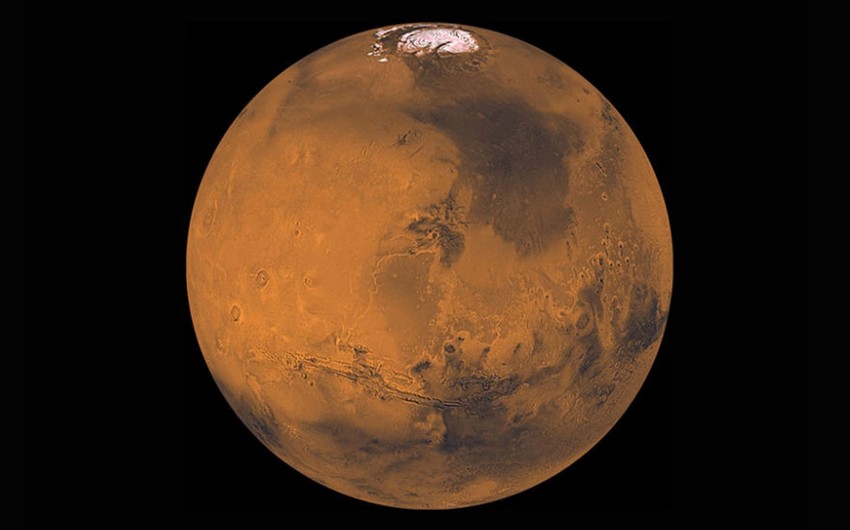In a groundbreaking announcement at the 55th Lunar and Planetary Science Conference held in The Woodlands, Texas, scientists revealed the discovery of a giant volcano and possible sheet of buried glacier ice in the eastern part of Mars' Tharsis volcanic province, near the planet's equator.
Report informs via Science Daily that imaged repeatedly by orbiting spacecraft around Mars since Mariner 9 in 1971 -- but deeply eroded beyond easy recognition, the giant volcano had been hiding in plain sight for decades in one of Mars' most iconic regions, at the boundary between the heavily fractured maze-like Noctis Labyrinthus (Labyrinth of the Night) and the monumental canyons of Valles Marineris (Valleys of Mariner).
Provisionally designated "Noctis volcano" pending an official name, the structure is centered at 7° 35' S, 93° 55' W. It reaches +9022 meters (29,600 feet) in elevation and spans 450 kilometers (280 miles) in width. The volcano's gigantic size and complex modification history indicate that it has been active for a very long time. In its southeastern part lies a thin, recent volcanic deposit beneath which glacier ice is likely still present. This combined giant volcano and possible glacier ice discovery is significant, as it points to an exciting new location to study Mars' geologic evolution through time, search for life, and explore with robots and humans in the future.
"We were examining the geology of an area where we had found the remains of a glacier last year when we realized we were inside a huge and deeply eroded volcano," said Dr. Pascal Lee, planetary scientist with the SETI Institute and the Mars Institute based at NASA Ames Research Center, and the lead author of the study.
Several clues, taken together, give away the volcanic nature of the jumble of layered mesas and canyons in this eastern part of Noctis Labyrinthus. The central summit area is marked by several elevated mesas forming an arc, reaching a regional high and sloping downhill away from the summit area. The gentle outer slopes extend out to 225 kilometers (140 miles) away in different directions. A caldera remnant -- the remains of a collapsed volcanic crater once host to a lava lake -- can be seen near the center of the structure. Lava flows, pyroclastic deposits (made of volcanic particulate materials such as ash, cinders, pumice and tephra) and hydrated mineral deposits occur in several areas within the structure's perimeter.
"This area of Mars is known to have a wide variety of hydrated minerals spanning a long stretch of Martian history. A volcanic setting for these minerals had long been suspected. So, it may not be too surprising to find a volcano here," explained Sourabh Shubham, a graduate student at the University of Maryland's Department of Geology and the study's co-author. "In some sense, this large volcano is a long-sought 'smoking gun'."


 https://static.report.az/photo/11c65b33-ed05-3b86-ae4e-15949b5354ec.jpg
https://static.report.az/photo/11c65b33-ed05-3b86-ae4e-15949b5354ec.jpg

